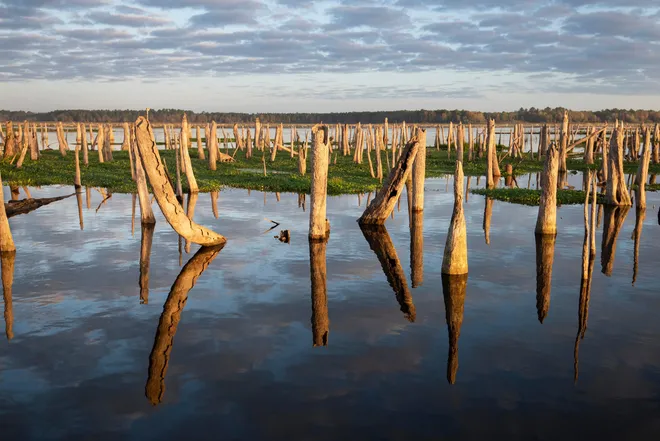Conservationists warn the situation could get dire
Written by Brooklyn Lassiter
For most of Florida, the dry season officially began in late October, and by the time Christmas arrived, much of the state was already grappling with conditions classified as at least abnormally dry. These conditions only worsened as rainfall remained scarce. The lack of precipitation has led to growing concerns across the state as rainfall deficits steadily increase, further intensifying the already dry landscape.
Tallahassee, in particular, is on track to experience one of its driest Decembers on record, with forecasts suggesting that the city could record the lowest amount of precipitation for the month since 1946 when just 0.54 inches of rain were observed.
As of December 22, only 0.51 inches of rain had fallen in the area. While there is a slight chance of measurable rain on Sunday, it doesn’t seem like it will be enough to significantly impact the dry conditions. Similarly, Orlando is facing a notably dry December. The first measurable rainfall occurred on December 15, and by December 22, only 0.44 inches had been recorded in the region, well below the usual average of 2.48 inches for the month.
Meanwhile, the Southwest region of Florida is also experiencing abnormally dry conditions, adding to the growing list of areas struggling with rainfall shortages. As the month continues, the forecast shows little relief, with only a minimal chance of isolated showers lingering through mid-week. According to the National Oceanic and Atmospheric Administration (NOAA) Climate Prediction Center’s outlook for January, the state is likely to face below-average precipitation in the early part of the year, exacerbating the drought conditions that have taken hold.
In the Fort Myers area, the lack of rain is even more pronounced, with only 0.15 inches of rain recorded thus far in December, compared to the typical 1.90 inches the region usually receives. Although forecasts for South Florida this week predict slightly above-average rainfall activity, with some days seeing a rain chance of around 40%, this will not be enough to fully reverse the ongoing drought. Instead, the area will likely experience scattered showers and possibly isolated storms—rain that, while helpful, will only provide limited relief for the ongoing dry conditions.
Southeast Florida, including Miami, is also facing an expanding drought. This December has been significantly drier than usual, with only 0.44 inches of rain recorded in the Miami area, far below the average of 2.44 inches typically received in the month. The forecast for the upcoming months doesn’t offer much hope either, as the period from January to March is typically the driest stretch of the year for both Miami and much of South Florida, further prolonging the already challenging drought situation.
As the driest months of the year approach, it’s important to remember that this extended period of dryness is likely to increase the risk of wildfires across the state. Florida’s wildfire season is technically year-round, with a peak occurring between May and June, but the lack of rain in the coming months will set the stage for higher wildfire risks by allowing dry vegetation to accumulate. This dry vegetation becomes highly flammable, and once spring arrives, it will provide ample fuel for any potential fires. Given the growing severity of the drought, Floridians must take proactive steps now to clear dry vegetation from around their homes and properties in order to reduce the risk of wildfires.
In Tampa, the dry conditions are expected to persist throughout Christmas week, with little to no rain expected through the end of the month. So far in December, only 0.09 inches of rain has fallen, making it one of the driest months for the area. December is typically the fifth driest month of the year for Tampa, with an average rainfall of 2.56 inches. As the drought continues to deepen, the focus will remain on monitoring how the lack of precipitation is impacting Florida, as well as the ongoing risk of wildfires.

